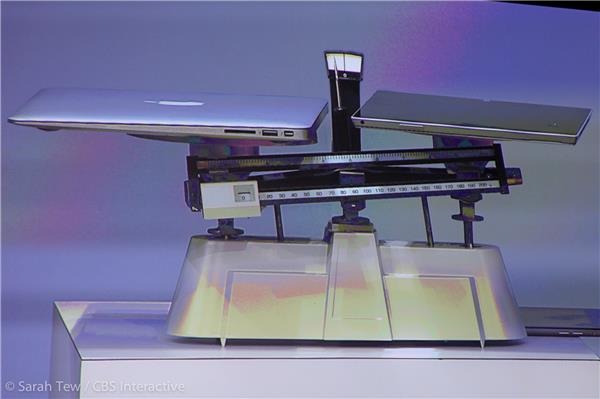Surface Pro 3: Microsoft's grand tablet vision lies in tatters


Usually, on the third go, Microsoft gets it right. First iteration is normally a bit ropey, second one has promise, and the third one has the competition crying in their beer.
The idea of Surface was to provide an inspirational hardware platform that consumers would love, and that OEMs would follow. This novel hardware, together with kit produced by OEM partners, was supposed to usher in a new era that showcased this wonderful new Windows.
That wonderful new Windows itself was a reimagining. Its purpose was to staunch the spread of post-PC computing. Microsoft's hope would be that customers would wake up, stop buying iPad in their millions with their lack of keyboards and Office, and instead buy Windows tablets in their millions.
As we now know, that didn't happen. Consumers didn't like Windows 8. Enterprises didn't like Windows 8. OEMs didn't like it. Not that that last point mattered much -- consumers and enterprises kept on demanding cheap hardware and the market kept on keeping prices low.
Tacit
The execution of this vision -- especially when we look at Surface -- was always more tentative than it should have been. The devices were always PCs dressed up to look like iPads. Microsoft never believed in the post-PC idea, preferring instead to think about "PC Plus". PC Plus itself being a PC that could do everything a PC could do, but also everything that an iPad could do.
(At this point we need to explicitly set to one side Surface RT and Windows RT -- it adds unnecessary complication just like it added unnecessary complication to the market. Just forget it exists, which I suspect will be easy for you to do.)
Read more
What we saw with Surface Pro v1 was something that looked like a tablet, but had criticism levelled at it because it needed a keyboard, and the only thing it did really well was the traditional Windows desktop. With Surface Pro 2 we crept a little further down the continuum with a kind of tacit acceptance this thing was actually a laptop.
Now with Surface Pro 3, the thing is being actively pitched as a MacBook Air competitor. Any pretence of this being a "PC Plus" well and truly shown the door.
Pens
Microsoft faced two problems when it came to executing the Surface vision. On the one hand, it was imperative to keep marketing Office like crazy, both because the revenue stream had to be preserved, and always because it was perceived as being a key differentiator in the market. On the other hand, Microsoft has struggled throughout the whole Windows 8 era with being unable to get away from the gravity of old ways of thinking about things.
Enterprises barely remember them, and consumers will never remember them, but this wasn't the first time Microsoft had tried to get the world to buy into the idea of tablet computing.
The Compaq TC1000 that my ZDNet colleague James Kendrick reminisced about last year was a good piece of kit. I had one, tried my hardest to use it, and ultimately gave it up. What it was a full on PC shoved into a tiny box, and equipped with a pen, and a version of Windows with some cruft grafted on that made it behave differently to a traditional laptop.
The cruft was never enough to make it a tablet first. All it did was fiddle round the edges, demanding compromises within the core design of the system in order to turn it on.
That description also describes Surface. It's a full PC, shoved into a tiny box, equipped with a pen, and given a version of Windows with cruft grafted onto the top. And again, the cruft is not enough to make it a tablet first, and it's demanding compromises within the core design of the system. In this case, it's a laptop you can't use on your lap very easily, together with an enormous price tag.
Gravity
To me, the Surface vision has been rather like a space rocket trying to deliver enough forward thrust to climb out of earth's gravity well, only to find it can't quite make it and smashes back down to earth with an immense thump.
Featured
In this instance, the gravity is the desire of Microsoft's engineers and managers to make Gates' original vision tablet computing work.
Today, the Surface PC remains a PC. It remains a device designed to drive commercial efficiency, as opposed to post-PC devices that are designed to drive digital social engagement. That PC runs Windows, it runs all your apps, it needs a fat and energy hungry Intel processor, it runs Office, and because it's hard to use a keyboard when you're physically moving about, it needs a pen.
What Microsoft was trying to do with Windows 8 and Surface was to reimagine Windows. The objective was to produce a new operating system that would go toe-to-toe with the iPad and the Android pretenders.
What we have now is a version of Windows 8 where ever-so gently we're teasing away from the bold new vision, bringing back the Start menu, toning down the operation of Windows Store apps -- not that Windows Store apps are getting any level of traction at all.
Now in the marketing for Surface Pro 3 we see statements like "The tablet that can replace your laptop".
But all Surface Pro 3 customers are left with is an (admittedly nice) laptop, which runs Windows, with a pen. It's Windows XP Tablet PC Edition all over again now.